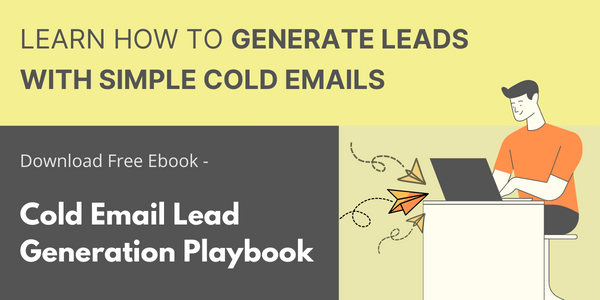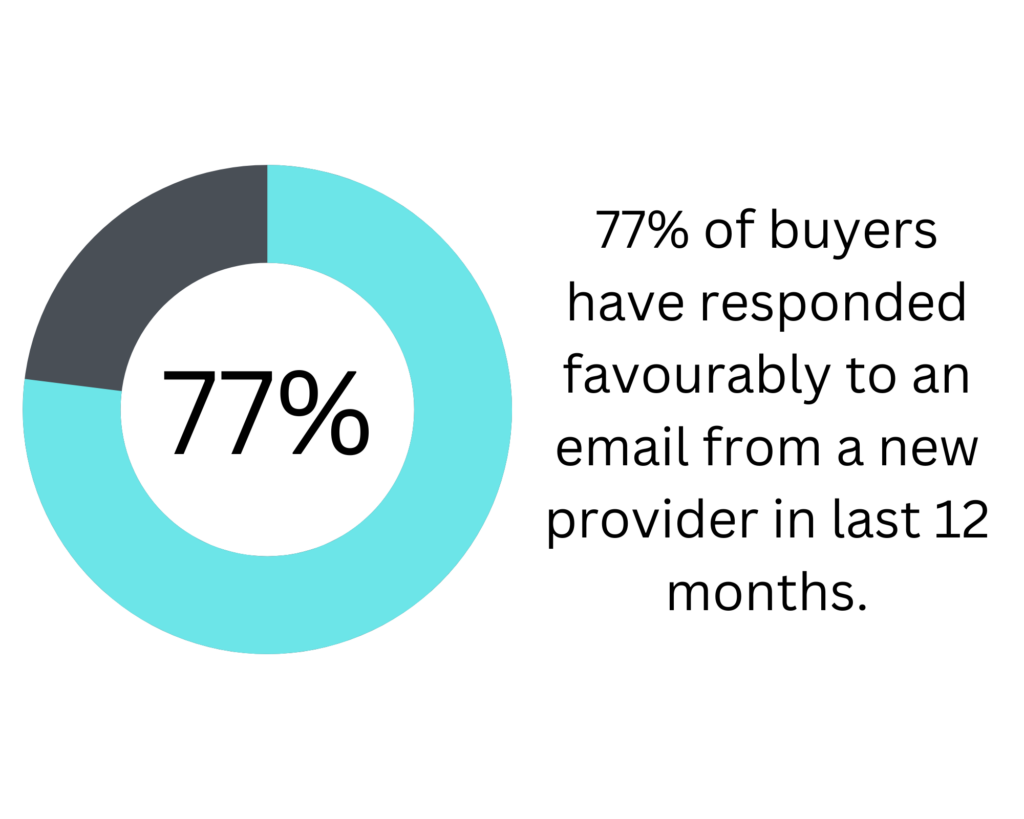Salespeople typically worry about how to approach new clients. If we make a cold call to a target, will they become irritated? Or will they ignore our cold email? In short what is the best way to generate leads – Cold Email vs Cold Call?
To be fair, there is a lot of uncertainty about how to approach a prospect. Nobody wants to miss out on a potential customer because of a terrible initial impression.
The cold call has a direct approach, forcing them to give out a Yes/No on the spot, on the other hand, cold emails are passive but allow the reader to reply on their terms with a laid back approach.
Both have merits and demerits, and when to utilize them depends on your plan and other factors. Let’s figure out so that you can decide which is ideal for you and your business.
Table of contents
1. Which is scalable?
1.1 Cold calls are not scalable.
1.2 Cold emails are scalable and inexpensive.
2. Which is disruptive?
2.1 Cold emails are not disruptive.
2.2 Cold calls are disruptive and frustrating.
3. Which gets a sureshot response?
3.1 Calling people directly is more interactive and gets a quick Yes/No response.
3.2 Cold emails can go unnoticed.
4. Extra points
4.1 Cold emails can be trackable.
4.2 Cold calling is more intimate.
4.3 Cold emails are innovative and educational.
5. Conclusion
Which is scalable?
Cold calls are not scalable
One major drawback of cold calls is that they are not scalable.
To make cold calls you need a sales team, that’s heavy on your pocket.
Not only it’s expensive to hire sales individuals but also the ROI will take time before it soars up.
Because the success rate of cold calls is 2%. It takes an average of 1.5 hours of cold calling per day for 5 days to win one appointment.
Cold emails are scalable and inexpensive
The fact that cold emails are scalable is the main benefit of using them.
There are softwares for cold emailing that send tens of thousands of emails before a cold call is made.
A group of sales representatives call prospects when cold calling. Even one person can send all the required cold emails.
You are not required to use the calling system or to pay more. So in terms of scalability a cold email performs better vs a cold call.

Which is disruptive?
Cold emails are not disruptive
When it comes to how they contact potential customers, cold emails are always passive just like LinkedIn messages.
They don’t bother the prospect during their private or designated time.
Clients have the opportunity to respond to cold emails when they have free time.
Because of this, they are not as annoying as cold calling. 77% of buyers have responded favourably to an email from a new provider in last 12 months.

Cold calls are disruptive and frustrating
Imagine you have your schedule ready all day and then you get a call from a salesperson. Frustrating isn’t, it?
You are now listening to their pitch and in 10 secs you figure out that you don’t want any of the products they offer. You are telling them that you aren’t interested but they are asking about the reasons for your disinterest.
They are trying to lure you into the offer by giving hefty discounts on something which doesn’t suit your need. And then the irritation makes you snap the call and disconnect it.
If the product is not on your need list, a cold call will be an irritating experience. 63% of salespeople say that cold calling is what they dislike most about their jobs.
Which gets a sureshot response?
Calling people directly is more interactive and gets a quick Yes/No response.
You might discover a lot about your targets’ wants or silent concerns when you call them.
Since the conversations are real-time, you may read the room more quickly and modify your story.
You will receive a response right away either a Yes or a No, rather than being forced to wait for the client to open, read, and respond to your message.
You have more control over the conversation and the chance to use your sales skills when you make a cold call.
Cold emails can go unnoticed.
Cold emails’ one flaw is that they never make it to the recipient’s inbox.
People receive a lot of emails each day, which causes their inboxes to be overflowing.
There’s a chance that your receivers won’t see your email amid all the other ones they get especially if they don’t recognize your name. Cold emails are frequently blocked, never opened, or outright deleted.
Making an engaging subject line and including personalization in the email will help you overcome these odds so that even if they open your email, they won’t disregard it. They would love to respond.
Extra points
Cold emails can be trackable
You may keep tabs on the outcomes of a cold email campaign you conduct and adjust your approach as needed.
Before launching your ads to hundreds or even thousands of consumers, you may also conduct A/B testing to see which alternative works better.
You are aware of your open, click, response, and conversion rates; using this information to improve future efforts will allow you to better understand what motivates your prospects.
Cold calling is more intimate
When speaking with prospects over the phone, you can change to a more personable tone once you’ve established rapport and become familiar with them.
Establishing effective and deeper relationships with people can be the outcome of such an approach.
By doing so, you may more effectively convey your message and modify your pitch to suit their requirements.
Cold emails are innovative and educational
When written creatively, cold emails can be quite aesthetically beautiful.
You can add several altered or original photos, gifs, or memes to further illustrate your goods.Cold emails are careful, paying attention to details in addition to the wonderfully designed structure or template.
Win rates are 2x higher when emoticons are involved.

People always prefer to make decisions in a relaxed manner when considering printed material rather than making snap decisions while receiving a cold call. And for this reason, cold emails do succeed more often than cold calls. That’s why 80% of buyers say to contact them via email.
Cold Email vs Cold Call: Conclusion
Both cold email and cold calling have advantages and disadvantages. You must determine what is best for your company.
In order to generate leads, we advise you to have both cold emails and cold calls in your arsenal.
However, if you’re just getting started, we advise cold emails because they are more affordable and scalable, and buyers also prefer personalised, engaging cold emails over cold calls.
How can SafeMailer help you?
SafeMailer has designed personalised and engaging email templates over numerous topics like sales pitch template, to offer growth template, survey template etc.
Your marketing emails will be sent out in waves using our cold email automation platform – SafeMailer. Instead of sending 1,000 emails all at once, it sends them over several days, 1-2 minutes apart, much like a real human would.
This would bypass the spam filters and enter into the prospect’s inbox.
FAQs
Q. What is the fundamental difference between cold emails and cold calls?
A: Cold emails involve reaching out to prospects through email, while cold calls involve direct communication via phone calls.
Q. Which method is more time-efficient?
A: Generally, cold emails are more time-efficient as they allow you to reach a broader audience simultaneously, whereas cold calls are more time-consuming on a per-contact basis.
Q. Do cold emails or cold calls have a higher response rate?
A: It varies, but cold emails often have a higher response rate due to recipients having the flexibility to respond at their convenience.
Q. Which method is less intrusive for potential clients?
A: Cold emails are often considered less intrusive since recipients can choose when to engage with the message, reducing the pressure on their time.
Q. Can personalization be effectively done in both cold emails and cold calls?
A: Yes, personalization is crucial in both methods. Cold emails can be personalized through tailored content, while cold calls benefit from understanding the prospect’s needs beforehand.
Q. How can I make my cold emails more engaging?
A: Craft concise and compelling subject lines, personalize the content, and focus on addressing the prospect’s pain points to make your cold emails more engaging.
Q. What’s the best approach to handling objections in cold calls?
A: Acknowledge objections positively, offer solutions, and maintain a conversational tone to navigate objections effectively during cold calls.
Q. Which method is more suitable for initial outreach in a B2B setting?
A: Cold emails are often preferred for initial B2B outreach, allowing for the dissemination of information without immediate time commitments.
Q. Can a combination of cold emails and cold calls be effective?
A: Absolutely. A multi-channel approach using both methods can enhance your outreach strategy, catering to different preferences and increasing your chances of connecting with prospects.


Leave a Reply